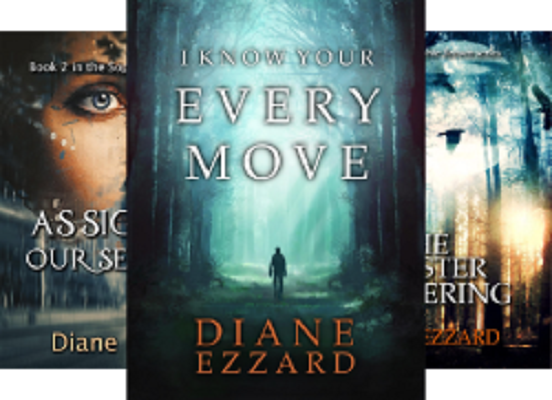
Buy the boxset now through Amazon and get 3 books for the price of one.
The set includes I Know Your Every Move
As Sick As Our Secrets
The Sinister Gathering
Click here for USA: https://amzn.to/2ATPa8v
Here for UK: https://amzn.to/2Pf8wxz
Diane Ezzard writes emotionally charged mystery books that keep you guessing until the end
by admin 2 Comments

Buy the boxset now through Amazon and get 3 books for the price of one.
The set includes I Know Your Every Move
As Sick As Our Secrets
The Sinister Gathering
Click here for USA: https://amzn.to/2ATPa8v
Here for UK: https://amzn.to/2Pf8wxz
The Sinister Gathering (Book 3 in the Sophie Brown series) is coming out next month and will be available from Amazon from October 3rd at a discount for a limited period.
Be sure to grab your copy.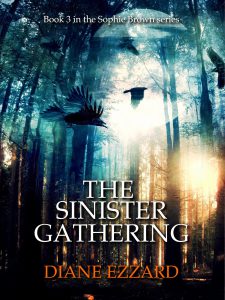
Sophie attends a well-being retreat hoping to find herself, instead, she finds a dead body.
Sophie goes on a retreat in rural Scotland, hoping to escape life and get in touch with her inner self.
Peace and harmony are advertised but what she discovers is anything but that.
As she gets to know the strange bunch of women staying at Glenloch Hall, she becomes more disturbed as time goes on. A nasty note, accusations fly, disharmony abounds.
She should never have entered that fateful property.
Exert from the book :-
Prologue
She darts into the woods. Branches link together like limbs urging her not to enter. The forest is black, but she must go in there. A breeze stirs the leaves. The back of her neck pricks. The path forks. Which way to go? A fox crosses in front of her, breaking off a twig from a low-hanging tree. As the trail curves away, she has a choice to make. She runs deeper into the darkness.
Her breathing is rapid. She does not stop to look over her shoulder. Her arms thrash at the twigs and bushes. She runs. She trips. An unseen log. An overhanging branch. She steadies herself. The rain is relentless. Hair is plastered to her face. Sweeping strands aside, she murmurs words of undecipherable distress. She ignores the whistling wind and looks from left to right.
A moonless night; the darkness as terrifying as her thoughts. She can taste the blood. The pounding of the rain against the foliage adds to her sense of foreboding. Twigs crunch underfoot mingling with the sodden path.
Her mind fills with terrifying thoughts. Gross images flash across her memory. She stumbles over some ivy entwined through the grass, hidden from view. She can’t steady herself this time and crashes into a tree. Pain pounds through her shoulder. A clap of thunder roars through the air.
Leaning against the trunk, she rubs her shoulder and winces. Ashe shudders with the intensity of the pain. The lightning highlights her muddy clothes.
Another flash of lightning brightens up the sky. A flicker of movement enters her periphery. She moves her head. Catching her breath from the knot in her stomach, she stumbles forward. She brushes tiny leaves off her shoulder and pushes forward.
The boom rolls across the meadow announcing its superiority. The boughs of the trees sway in the strengthening gust, surrendering their leaves without a fight. A streak of silver splits the sky. Fired up with adrenaline, the rain pelts against her skin like bullets. The wind howls like a wolf. Another crash of thunder and the trees shake in unison, the warning too late. Lightning comes again. A brilliant shock of white in the black sky, forking silently to the unsuspecting ground. She continues at speed. There is no shelter from the harsh surroundings.
Her journey continues as she sets off further into the unforgiving forest. She flinches as she runs. Breathing rapidly, her eyes dart around. A swish here and a branch snapping there. The sudden noises make her jump. She is not alone.
With each step, a jarring pain from her shoulder shoots through her body. She slips on wet leaves and reaches out holding onto a branch.
Her breathing is shallow. Mud smears her face. Her hair is matted. Her energy levels are low. The torrential conditions have depleted her spirit. She stops to catch her breath. Her limbs are exhausted. Resigned to her fate, she closes her eyes.
Panic consumes her. Her stomach tightens as she prays. Is it time for me to meet my Maker? An arm pushes forward. She stops dead. Her head droops backwards. She screams. Her body freezes, numbness taking over as shadows loom overhead. She doesn’t need to look up. A wave of nausea attacks her as she glances around. A sharp silver blade flashes before her eyes.
“I’m sorry,” she screams.
Her words are lost against the cruel elements. She screams again, acknowledging her fate. Her body jerks and the shiny metal pierces her skin and sinks into her flesh. She cries out, desperate guttural sounds.
Thick crimson blood flows out of the wound in her neck as she sinks to her knees convulsing and trembling like a rabid dog. She calls out, but it is too late for pleas. Her sounds are ignored. The blade sinks into her neck. Blood trickles onto the ground, intermingled with mud, turning the puddles a deep red. Her body collapses to the ground. She is motionless.
Writing and Editing
Now the fun starts – the writing. I was advised when I started out to just get everything down. Don’t worry about it at this stage. If you write 2500 words a day which is achievable, you could have the first draft of a novel ready in a month! Sometimes I write straight to the laptop, other times I do longhand first. It depends what mood I’m in and where I am. There are pros and cons to both methods. Obviously, using the laptop is quicker and you can move sentences around easily. If writing longhand, you can spot mistakes straight away.
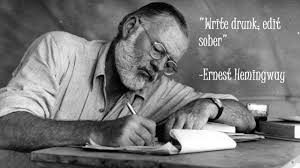
For me, the writing is the easy part. It is the editing that takes up most of my time and I find it very labour intensive. Every writer is different, but I like to do at least eight full edits myself. The areas I look at are:-
As well as checking for these specifics, I will also be looking at sentence structure, spelling, punctuation and grammar. After this, I also use a number of tools to do a more in-depth edit online.
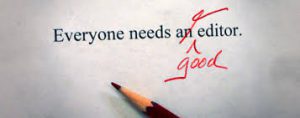
I use three software programmes for this –
After I am happy with the results from these, I then send my manuscript off to be professionally edited and surprise, surprise, my editor always finds mistakes.
There are three types of edits:- development edit where the editor looks at the bigger picture and the general story plot, anything that may have been left out, needs removing or is not working.
copy edit, this is like a human spellcheck with extras, such as pointing out incorrect use of italics
and proofread which focusses on ensuring there are no mistakes left and the document is formatted properly.
When I get my manuscript back, I put in the recommended changes and do a final read, then it’s ready to be let loose on the poor unsuspecting public.

Scene Setting
If you show someone around your home, it’s logical to do it one room at a time and tell them all about the aspects of that room as you enter each one.
Novels are built in the same way. Each scene is set in a specific location, time zone and from one point of view. If this is to change, i.e. from a new perspective, then it needs to be a new chapter.
Each scene should move the story forward. Scenes aren’t just scenery.
Pacing is important. How quickly or slowly you move from scene to scene will impact on the story. It is essential that there is a variety of pacing. In a film, there are times when the camera focuses in and we get to see every little detail, as though we were watching under a microscope. There are other times the scene moves so fast we could almost miss it.
The reader needs to be asking the question, “What happens next?” Keeping this in minnd will help will putting in cliffhangers, often at the end of chapters.
You should establish character arcs, or cause and effect. What has happened in a scene will impact on the characters so the consequences of past scenes need to be shown. The reader shouuldn’t have any unanswered questions.
The way the scenes are set should make the story easier to follow. There should be links. One way of organising this is with mind mapping. You can use visual aids such as index cards or post-it notes. Each card should describe a scene and its purpose. Storyboarding is another visual approach. Sketch out the big moments of the scene. Here you can check what is essential and what can be left out.
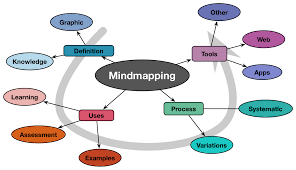
There are different types of effective scene openings:-
Ways to end a scene:-
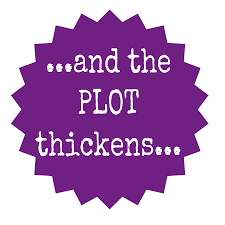
PLOT FORMULA
There are many different ways of putting a plot together for a novel. Having a formula can give you a framework and helps with the planning of your work. Not everyone does this in a systemised approach but I have found using formulas invaluable. What is interesting is that different ones seem to work with different stories.
There are some gtreat examples of formulas already out there. Some of the best ones are :-
The Snowflake Method by Randy Ingermanson
Dan Well’s 7 point structure
Save the Cat by Blake Snyder
Nigel Watt’s eight point ARC
Lester Dent’s plot formula.
I have tweaked a couple of versions for my own use and these are what I have come up with :-
Formula
I also like this example of plot development :-
1. Start with a tagline
2. 1 or 2 sentence summary of the story
3. What does the hero have to lose and what do they want to win?
4. Do the back cover blurb
5. Complete a full blurb
6. Name 3 major disasters
7. Describe 3 red herrings
8. Summarise features of the main characters such as their name, age, description, history, and a little bit about who they are.
9. Develop this into a one sentence storyline about what motivates them, what they want and what is preventing them getting it, and what they eventually learn.
10. Write a full page from each of the main chaaracters point of view.
11. Decide on the ending.
12. Do a synopsis of the book
13. Break that down into a synopsis of each chapter.
With a lot of the plot formulas, there are many similarities. Sometimes, it feels right to develop your own. Hopefully you will find one to suit your needs.
Character Development
So which is more important- the characters or the plot?
Both have to be compelling to keep a reader interested. The plot needs to be page turning but if the readers have no interest in the characters then they won’t be bothered to turn those pages.
I have a set of principles about main characters that I like to follow. There has to be a starting point with the character’s personality. What particular traits do they have? These shouldn’t be introduced all at once. The reader should get to know them gradually, the same as they would a living person.
They have to have weaknesses. What is their Achilles heel? What will the antagonist be able to use against them? All great characters have flaws and they make mistakes. That’s why we love them so much. They come unstuck at times which makes for a great plot.
Moving on from their weaknesses, how can they be taken advantage of? How can their defects of character be used against them? Have they made a mistake in the past that will come back to haunt them? These are the things that will really ramp up the reader’s interest.
Throughout the story, we need to see the main character change. What realisations have they made about themselves that will make them act differently? What are they doing now that they didn’t do at the beginning of the novel?
How are they going to fight back when they going gets tough? What challenges will they face when the change is tested? Finally, at the end of the novel what is their new perspective? What have they learnt about themselves or about life?
It is important that minor characters are also brought to life. Whilst the reader won’t get to know them in the same way,, they can still steal the show with their idiosyncrasies.
12 steps for defining character
When naming characters don’t use the same first initial for more than one character as it often confuses the reader, as does having too large a cast. Unless each character has a separate, well-defined voice, it is hard to tell them apart. Don’t forget nicknames and don’t have rhyming names such as Polly and Dolly. Finally, make sure the character name fits the personality.
2. Age
If there is a back story, think about how the character would have acted at that age as opposed to now. Don’t forget to include events and customs synonymous with the era.
3. Looks
Describe your character from hair and eye colour, height, body shape, distinguishing features, clothes.
4. Props
These could be anything from the car they drive to whether they smoke. Make sure these fit into their personality.
5. Speech
Do they have an accent? Are they educated?Do they swear or have a pet phrase? How do they speak? Are they confident conversationalists?
6. Nature
Are they optimistic, happy, adventurous? What is their basic temperament?Are they moody, quiet, mean? Are they romantic, hard working, sensitive?Do they care about others?What are their fears? Are they nervous and insecure? This list could go on indefinitely but it is important to define at least three characteristics before you start to write about them.
7. Likes and dislikes
What are their hobbies?What sort of music do they like? What do they read, east, cook? What is their most treasured possession?
8. Network
Who are they close to and who do they come into contact with? This could be parents. grandparents, siblings, children, lovers, friends, acquaintances, neighbours, pets, enemies. How does this character interact with each of these individuals?
9. Location
Where do they live? what type of house?What kind of neighbourhood? How long have they lived there? do they like it?
10. Occupation
How do they earn their living? Do they enjoy it? How do they unwind?Is there anything else they are goof at, any hidden talents?
11. Past
What was their past like? Are there any skeletons hidden in their cupboard?
12.Their role
How do they fit into the novel? What do they want? Why do they want it? How will they go about getting it?
By taking the trouble to get to know your characters, it will make the job of writing your novel do much easier. Scenarios will no doubt pop up around aspects of their life that will fit into your plot
When you planning your novel, the thing to remember is there’s more than one way to skin a cat. If you ask ten different authors how they plan and structure their work, you will probably get ten different answers.
When I started out, I was someone who just dived in and let the creativity flow, not knowing where it was going to take me. That can be fun. You never know what you’re going to come up with! Nowadays, I plan more and try to use recognised structures for my work although I never stick to a strict path. I’ve found by working this way, I have some creativity but also I am finding more out about my characters, their motivations, how they fit in the story and how they connect with each other.
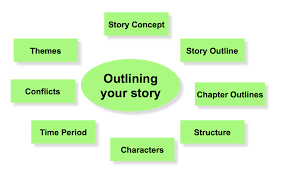
Concept
Once you’ve brainstormed and got your initial book idea and you’re confident you can turn it into a novel, you’ve got the concept. That is the acorn that your oak tree is going to grow from. By starting with your acorn, a story will be evolving through asking a series of questions. The more inquisitive you are, the easier this stage will develop. Every idea and scenario you come up with, you need to be thinking – what if? From there you will have choices and depending on which choice you make at each stage of the process will determine where your story goes. It can be quite fascinating. Once you’ve finished this stage, you will have a collective sum of questions and answers and that then becomes your story.
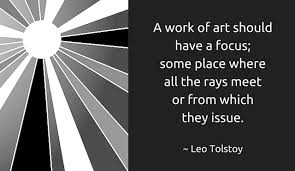
Theme
It’s time to think about the theme. By having a theme, it’s far easier to keep the story focussed. Once you’ve decided the purpose of your book you’ll be able to see much easier what should be in and what should be banished to the waste bin.
The theme is the deeper meaning beneath the story that gives the book depth. It links the characters to the plot in the chosen setting. In other words, it’s about people having specific experiences in particular places. The nature of the experiences and how the characters are affected by them enables the reader to reach a conclusion about some aspect of their life. In a nutshell, that is the theme.
In order to come up with a theme for your novel, you need to decide what issues you want to explore. Later down the line, when characters are introduced, you will be throwing them into situations and testing your theme. There can be both major and minor themes in a story. As a mystery writer, a common theme is that crime doesn’t pay. A minor theme in the same story may be a character overcoming adversity.
Sometimes, you can recognise the theme from the title of the book or the tagline. Other times it isn’t easy to recognise. You may finish reading a book and wonder what it was all about. If you can recognise the deeper level of the books you read, you will see how the theme runs through. So, the theme of the novel is the view it presents about life.